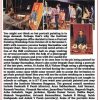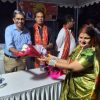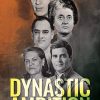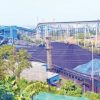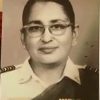Goa is abuzz with excitement as vintage bike and car owners, users, collectors and fans are decking […]
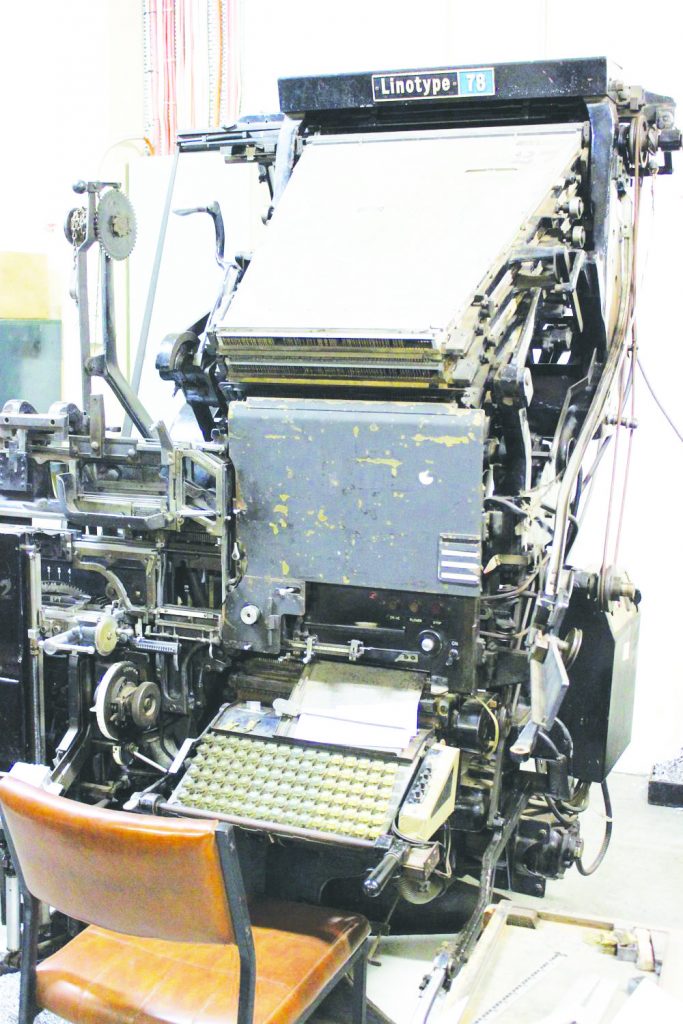
GOLDEN & DIAMOND JUBILEE!
Cover Story, July 04- July 10, 2020 July 3, 2020LUDDITE: I started journalism in 1970 in the Financial Express which was then still using lino tech machines for composing pages and the offices were located near the wholesale fish market at Sassoon Docks down Colaba Causeway in Mumbai. The only common connection between my first job and my last job is the fragrance of fish!
By Rajan Narayan
July 4, 2020 marks my diamond jubilee as a journalist and platinum jubilee in that I will be starting my 75th year in this profession. I am hoping that the lockdown on Goan Observer will be forced open by our readers and our fans by generous contributions to keep the State’s only independent media organisation alive……..
July 4, 2020 marks a very significant landmark in my life of 75 years. July 4 marks the golden jubilee of my career as a journalist. July 4 also marks the diamond jubilee of my life and existence on earth. I got my first job in the media as a trainee-cum-sub-cum-reporter in the Financial Express, the financial daily newspaper of the Indian Express Group. It happened almost by coincidence. I was of course looking for a job in the media. Indeed, I was obsessed by the thought of becoming a becoming a journalist ever since my schooldays.
My first media venture was called the The Retort. Which has two meanings. Retort can be the harmless chemistry retort which is used for experiments. Retort also means response or even revolt. The Bengaluru University where I did my pre-university studies brought out a public issue to promote the vice-chancellor and the top officials of the university. The ground reality was that the university was in a mess. The than vice-chancellor was more interested in promoting his literary aspirations as a poet than the smooth running of the university. Some of a students decided that they should bring out a counter publication to expose all the corruption and inefficiency in the university. Thus, was born The Retort. We were still students and a little afraid to openly defy the vice- chancellor. Which is why we drew a sketch of a chemistry retort claiming to be distilling the essence of student life!
I had moved to Mumbai from Bengaluru to do my Master’s in Economics in which I had secured first class at undergraduate level. I was staying at the University Hostel near Churchgate Station. To pay my fees and meet other expenses I used to rely on tuitions and engage in freelance writing for business publications. The editor of one of these business publications which focused on textiles was a good friend of the late Dhirubai Ambani who was then just a trader in yarn. Dhirubai wanted his son who was in the 10th standard at that time to improve his conversational English. It has been my experience that students from the vernacular medium have problems with conversational English. Till Mukesh went abroad to study he used to come to my hostel on B Road at Churchgate to study English. On some festive occasion I even got the first of the cloth pieces made out of polyester which was the first product made by the Reliance Company.
In the hostel I had a friend who used to work in the Financial Express. I had accompanied him to the Express office. Fortunately for me they were looking for trainees as journalism and with the very low salaries paid then they did not attract many bright young men. In fact most of the sub-editors were those who took up media jobs because they did not get a job with the government as a lower division clerk. I happened to be carrying some books by Nobel prize-winning economist Paul Samuelson.
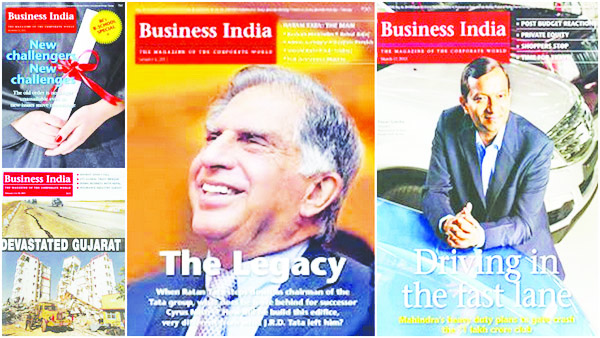
The news editor, perhaps interested by the fact that I had a passion for reading, offered me a job as a trainee. I joined the media as a “luddite” which was what media persons were called back then. There were no computers and my job was to edit the stream of news which came from all over the world on the teleprinters. We also had to correct the copy submitted to us by the reporters. Every newspaper had a light piece called the “middle” and I used to contribute to this column regularly. Impressed with my writing skills I was shifted to the editorial part of the newspaper.
I was terrified because this involved writing what I used to call “idiotorials.” Editorials are the comments which appear on the left hand corner of the edit page and are considered the views of the newspaper. I protested to the editor that I was not learned enough to write editorials which I had been let to believe were scholarly pieces written by experts. The late VK Narsimhan was than the editor of the Financial Express and he kindly encouraged me and told me that all I had to do was to get the files on the subject from the library and express my views.
The editor cautioned me that I should make sure that there were lots of conditional clauses in my editorials such as “never the less,” “be it as it may be,” etc. Which was to safeguard the paper legally! I asked the editor what the rival papers would write on the subjects. He re-assured me that since nobody wanted to take a stand everyone would be cautious enough to use several conditioner clauses. The real challenge was that I had to produce 1,500 words between 11am when the editorial conference was held to decide what we would write on that day and 4pm when the matter had to go to the press. It is the years of writing editorials which makes me capable of writing 2,000 words or more on any subject just based on background material available in the library.
The years rolled by and even after six years I was still getting a salary of 600. The argument of the then owner Ramnath Goenka was that I was a financial journalist. And got so many invitation for lunch, dinner and teatime that these journalists need not be paid much. The irony was that the only places I could afford to have lunch or dinner were the 5- and 7-star hotels at functions organised by businessmen eager for publicity. There were days when I would not have the money for bus fare back to my residence and had to walk. I was invited by my friend Rahman who had just become editor of the magazine Onlooker to join as assistant editor. Since it meant an increase of400 in salary I jumped at the opportunity. Since both Rahman and I were part of the Left we strongly believed that women should be respected. The only reason the Onlooker used to sell was that it carried a female nude picture in every issue. We were dumb enough not to realise that 80% of the readers used to buy the Onlooker for the nude! Promptly the Marwari who used to own a coal mine and owned the Onlooker asked both Rahman and me to quit.
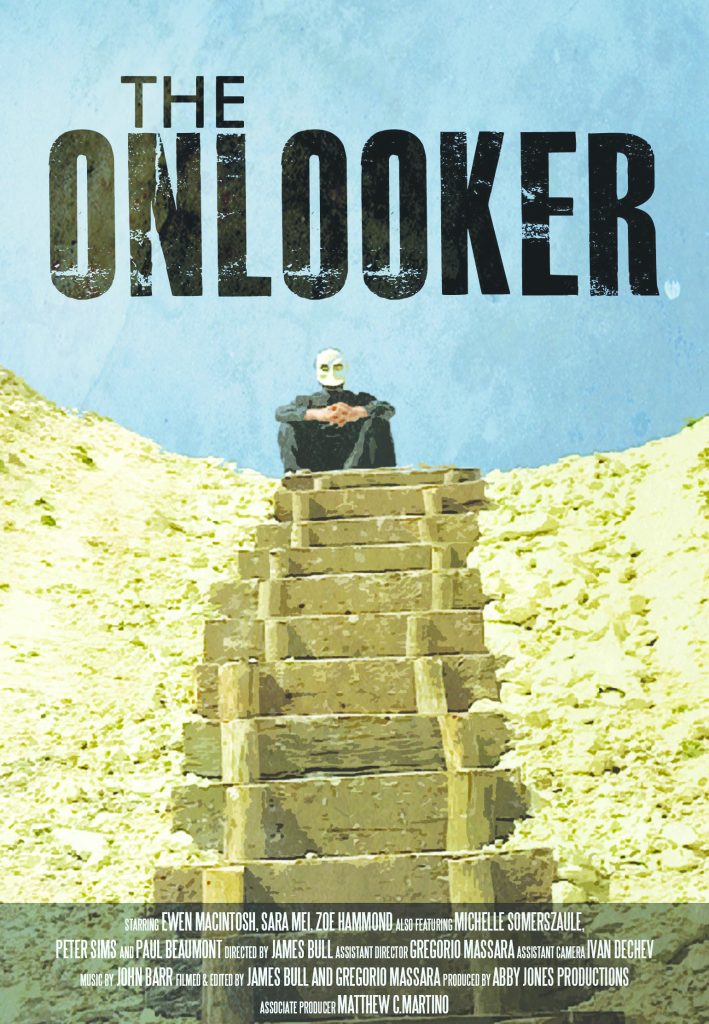
editor’s job
I was lucky in be able to get an editor’s job almost immediately. The former general manager of the Times of India had started his own group which was called the Eve’s Weekly Group. This included a film magazine called Star & Style and a monthly for young people called Mirror. The vacancy in the Mirror which I filled was earlier occupied by an interesting 75-years-old Jews called Japteh. I had learned my lesson with the Onlooker. I had done my homework and discovered that Japteh had created the perfect formula. The magazine was for young people by young people and had aspirational articles: How to become great. The best books in the world. And of course short stories and poems contributed by readers.
The readers were young people from small places like Goa. In the 70s Goa was still considered a small town place and I had not even heard about it. I discovered that the main attraction of the magazine was that many of the young people used to write letters to the editor with questions that they could not ask their parents. For instance a young lady would ask if she would get pregnant because a boy had held her hand. Those were the days of innocence. I retained the formula, only adding pen-pals column which many of you may not have heard of.
In those days there was no Facebook or Whatsapp. Young people used to send details about themselves and their addresses so that they could get pen-pal friends through letters to each other. It became so popular that I used to get an average of 10,000 pen-pal coupons every month! The circulation of the magazine doubled from one lakh to two lakhs.
Based on my success with the Mirror I was invited to become the editor of a literary magazine called Imprint. The salary was handsome at 4,000 which was four times the1,000 I was getting at Mirror. I converted the major part of the magazine into an in-depth investigative section. I remember one of the cover stories titled Goodbye Mumbai, Hello Dubai about those who sought jobs in the Gulf. But the article was more about those who cheated young men who wanted to go abroad. One of the biggest conmen was Anees Ibrahim, brother of the don of dons Daud Ibrahim. Anees boosted to me at an Aunty’s Bar in Dadar that he used to dress up as an Arab Sheikh, book a room in the Oberoi Hotel and then run away with the money. Ever the romantic he would throw flying kisses to the Aunty’s daughter Julie who used to serve us. It was the time when the movie “Julie, I love you” was just released.
financial journalism
From Imprint which again had grown in circulation under me I decided to return to financial journalism as deputy editor of Business India which was the only business magazine in the early 80s. I was the first to write about all the hera pheri that Dhirubai Ambani engaged in to become the big industrialist. From having government policies changed to manipulating officials. The legend goes that he used to tell people that he had a golden chappel and a silver chappel which he used depending on who he was dealing with. But I must admit that he had enormous charisma and built world class factories. His vision was so intense that he used to go about with the plan for an oil refinery even when he was a petrol pump attendant in Eden, the British colony which is now called Yemen.
Like everyone else including the then editor of the Times of India Dhirubhai offered me more than 5,000 shares of Reliance company which would now be worth more than 100 crore. Being the honest budhoo that I was who prided himself on his honesty and integrity, I refused. Now at 75 when I am a struggling to keep my independent weekly Goan Observer alive, I keep wondering if I was a fool to have refused those shares! Surely when opportunity knocked on my doors I should have welcomed it. Not only did Dhirubai allegedly offer thousands of shares to Girilal Jain, then editor of TOI, he even arranged a loan from a nationalized bank to enable the TOI editor to pay for the shares. And in Goa despite my 37 years old reputation as a brave and honest journalist, the OBC-turned-PNB refused to offer me a5 lakh loan.
A close friend of mine, the cartoonist late Mario Miranda was a good friend of the Fernandes family in Goa which owned the title to the Portuguese daily OHeraldo. Mario suggested my name to convert the Portuguese paper which had no circulation into a full-fledged English daily. Since I had never started a new daily from scratch I accepted the offer. I came to Goa 37 years ago on October 1, 1983. There was no equipment like teleprinters though the family which was in the printing business had computers.
There was no staff at except for Devika Sequeira who had acquired some experience of journalism in Mumbai. I got most of my staff by picking up boys from Miramar beach who had dropped out of Dempe College or at least spent more time on the beach than in the college. Within 15 days of coming to Goa we launched the English OHeraldo. I had decided that I would focus on South Goa and the Catholic community as the only English paper then, The Navhind Times was only concerned with the affairs of the Hindu community.
My selective focus was also good for cash flow as far more Catholics took death and birth advertisements which were paid immediately. Thanks to the active participation of the OHeraldo in the Konkani movement we saw an increase in circulation from a couple of thousands to more than 30,000. We were also responsible in the early 90s of smashing the gangs which ruled Goa, thanks to the support from the then strict Chief Minister Ravi Naik.
After 20 years of building up the OHeraldo or Herald as popularly called into the most influential daily of Goa, I quit in 2003. The father AC Fernandes who owned the stationary shops Casa J D Fernandes at the Panjim Municipal Garden was only interested in prestige and honour. He was a publisher who had the guts to tell the then Chief Minister Pratap Singh Raoji Rane that he had no right to tell him what should appear in the paper.
Unfortunately the sons, unlike their father, were only interested in acquiring a casino license. I had got married again in 2001 to Pankajbala Tara Patel a journalist and a poet keen on coming to Goa. Tired of being exploited by the owners of media companies we decided to start Goa’s first independent media company Goan Observer Pvt Ltd. Besides the weekly we were also active in desktop business having published more than 20 books. We also did posters on epidemics like the swine flu. We made the mistake of putting all our eggs in the Congress basket, which provoked revenge from the BJP. Since 2014 when the BJP came to power in the Centre and subsequently 2017 when it captured the Goa government also, we have had enormous problems. Our cash flow remains locked down between Rs5 to Rs7 lakh dues from government and private organisations.
waiting, willing
I have been wanting, waiting and willing to hand over managerial and editorial control to a much younger group of niz Goenkars who will maintain the tradition of the Goan Observer. I am still hoping that before July 4, 2020 Goan Observer will find a new team to take over. Both health wise and wealth wise I no longer have the energy to run the Goan Observer. I hope that all my friends and well-wishers and Goenkars who have given me so much support will give us advertising and donations for the issues of the weekly of my birthday month of July, so that we can continue in journalism on the principle of “Freedom from Fear.”
I would like to thank my wife Tara Narayan and my colleagues, my administration manager Heena Nawar, my designer Saumya Naik and advertising executive Saish Shirodkar and all our earlier staffers, particularly our former executive editor Jonquil Sudhir for their moral and physical support through the 17 years of bringing out the Goan Observer. To restore law and order was the then honourable PI of Panjim Umesh Gaokar, who recently retired as SP (Crime Branch) and who is considered the bravest, most honest of all police officers.
I would be unfair if I did not include in the honors list the then chief reporter of the Herald, Anthony Fernandes, our crime reporter who vigorously followed up every criminal activity in the Tiswadi taluka. Anthony was given government quarters to live in at Patto as also police security. Allegedly members of the Rudolf gang even tried to harm his three-year- old child. Finally, in disgust and not wanting to invite the shadow of threats on the life of his family, he took up a job in the Gulf.
Anthony is back now and I publically invited him to write about the Herald war against the criminal gangs of the 90s. Unfortunately, we are back to square one with a chief minister who is also the home minister who is totally indifferent to the law and order situation in Goa. Almost by the hour there are reports of assault or a firing or rape and murder taking place, although it is thought to be primarily confined to outsiders and particularly those coming from Uttar Pradesh.
The fact that both the victim and the assailant in the latest shootout incident were a Bepari from Karnataka and a Yadav from UP, would seem to suggest that the new breakdown in law and order and gang wars are limited to the bhaile. They ghar wapasi of several lakh of migrants does not seems to have affected the continued deterioration in the law and order situation. I cannot imagine open attacks with guns and other weapons during curfew hours over the affections of a girl (as a section of the press has reported) has reported!
POLITICAL FOES PERSONAL FRIENDS
I HAVE had the privilege of knowing every chief minister of Goa at a very personal level. Excepting for the first Chief Minister Dayanand Bandodkar and the most recent Chief Minister Dr Pramod Sawant. I consider Dayanand Bandodkar as probably the best chief minister Goa has ever had and Churchill Alemao the worst.
There was relative stability before Statehood with only two chief ministers, namely Dayanand Bandodkar and his daughter Sashikala Kakodkar. Whom I met as part of a delegation fighting for the ramponkars much before I became editor of Herald. But after Statehood and the increase in number of MLAs there were more than a dozen chief ministers due to constant political instability.
The only chief ministers who completed a full term in office was first Chief Minister Dayanand Bandodkar, Pratap Singh Raoji Rane who completed four terms and Digambar Kamat who completed two terms. None on the list could complete even one full term as chief minister. The late Manohar Parrikar who has been the most controversial chief minister was elected or hijacked the chief minister’s post brilliantly four times but could not complete even one full term. The chief ministers with the shortest tenure was Ravi Naik, who was CM for only 48 hours on one occasion. Churchill Alemao was CM only for 45 days and handed over the post to Dr Proto Barbosa as per agreement.
I have never visited any of the chief ministers except perhaps for Digambar Kamat in their offices. But every chief minister except for Bandodkar, who died before I came to Goa, and Parsekar who took over from Parrikar, had visited my humble basement flat in Dona Paula. This includes the late Manohar Parrikar who came to my flat immediately after being sworn in as chief minister for the first time.
I considered all chief ministers including Manohar Parrikar as friends at a personal level. Even though I had political differences with many of them, particularly the late Manohar Parrikar. I have not really had the opportunity of meeting Mr Pramod Sawant as I have stopped going out much due to the poor state of my health and also lack of any invitation from him for any meetings! The chief ministers whom I was most friendly with were Digambar Kamat and Dr Wilfred D’Souza.
I never sought any personal favours like official quarters or casino licenses for my bosses all through the 37 years I have been an editor in Goa. The most hostile has been the current chief minister, Pramod Sawant, who does not even acknowledge that the Goan Observer exists and that I have played a major role in the history of Goa.
